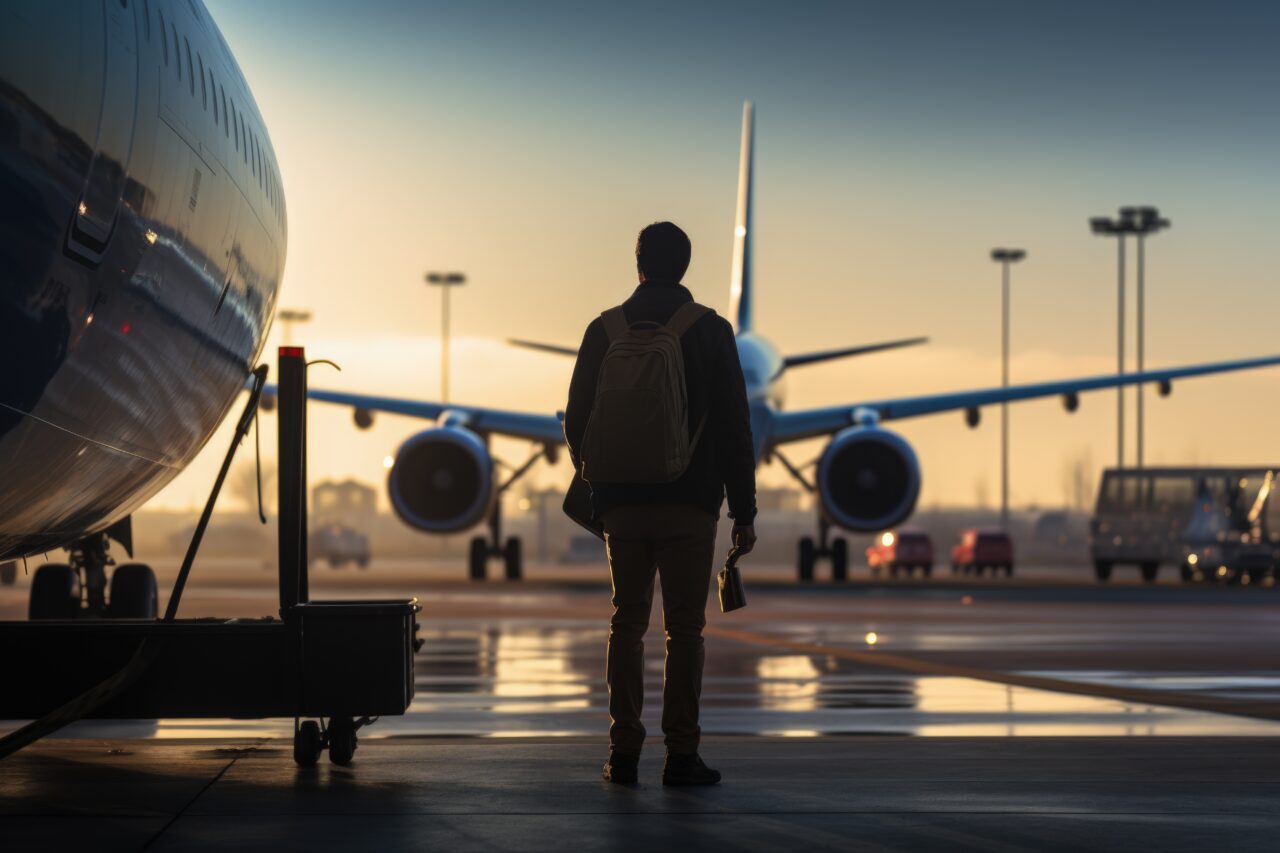AI Elevating Passenger Journeys with Aero Synchronicity transforms smart airports to discover how next-gen intelligence streamlines processes, enhances comfort, and personalise travel experiences.
AI Elevating Passenger Journeys with Aero Synchronicity begins the narrative at the intersection of aviation and intelligence. In an era where passengers expect friction less, personalised, and efficient travel, Aero Synchronicity positions itself as the technological linchpin: embedding AI deeply into the passenger journey to re-imagine how smart airports operate. In this blog, we explore the architecture, benefits, challenges, and future of this solution.
Vision of AI Elevating Passenger Journeys in Smart Airports
At the core of Aero Synchronicity is the vision that AI Elevating Passenger Journeys isn’t just about incremental automation; it’s context-aware, anticipative travel assistance. From curbside to gate, the system continuously observes, predicts, intervenes, and adapts, offering passengers proactive guidance, and gives airports a unified intelligence layer.
Passengers no longer receive static instructions; instead, they get dynamic, personalised directions adapted in real time to delays, crowding, security checks, or gate changes. Airports benefit by smoothing flows, reducing bottlenecks, and optimally allocating resources while preserving privacy and safety.
Architecture & Technical Foundation of Aero Synchronicity
1. Data Ingestion & Multi-modal Sensor Fusion
To enable AI Elevating Passenger Journeys, Aero Synchronicity ingests data from multiple sources: CCTV, motion sensors, Wi-Fi/Bluetooth pings, baggage tracking, boarding pass info, and scheduling systems. A fusion engine aligns and normalizes this data in real time, forming a coherent situational awareness map.
2. Predictive Analytics & Decision Engine
A core decision engine, backed by machine learning models (e.g. recurrent neural nets, graph neural networks), forecasts crowd movements, security queue lengths, and gate transfers. The system uses historical and streaming data to compute probabilistic estimates of delays or overloads and suggests remedial actions like dynamic lane openings or rerouting passenger streams.
3. Personalised Passenger Agent
At the individual level, a mobile or wearable “travel agent” app interacts with the central AI. Using anonymized profile data (e.g. preferences, travel history, frequent flyer status) plus real-time location, it pushes tailored advice: “walk through Corridor B to avoid congestion,” “your new gate is 12 minutes ahead,” or “grab a coffee while your bag is uploaded.” The agent continuously updates based on live feedback.
4. Integration with Airport Systems
Aero Synchronicity integrates bidirectionally with legacy airport systems: flight scheduling, baggage handling, security, resource management, and building automation (HVAC, lighting). This allows the AI to trigger changes (e.g., open an extra security lane) or respond to system events (e.g. maintenance, equipment failure).
Real-World Benefits of AI Elevating Passenger Journeys
1. Enhanced Operational Efficiency
With real-time insights, airports can reduce dwell times, smooth boarding flows, and cut idle resource periods (e.g. unused escalators or gates). This efficiency translates to cost savings and better throughput.
2. Better Passenger Experience
Passengers benefit through fewer surprises, less anxiety, and more control. Their journey feels smoother and personalized. Flight disruptions or gate changes become less disruptive because the system proactively adapts and notifies them.
3. Safety, Security & Resilience
By constantly monitoring crowd density and movement, Aero Synchronicity can detect abnormal spikes, dangerous clustering, or unauthorized detours. It can alert security, throttle flow, or re-route foot traffic to maintain safety margins.
4. Data-Driven Planning & Continuous Learning
Over time, the AI aggregates anonymized historical data to help airport planners simulate what-if scenarios (e.g. new terminal wings, peak-hour expansion). The system continues refining models as traffic patterns evolve, ensuring adaptation rather than rigid rules.
Deployment Challenges & Mitigation Strategies
1. Data Privacy & Ethical Handling
One of the chief concerns is passenger privacy. Aero Synchronicity anonymizes or pseudonymizes data, engages in edge computation (keeping sensitive data local), and adheres to data protection regulations (e.g. GDPR, local law). Transparency and opt-in consent are key.
2. Integration with Legacy Infrastructure
Many airports run decades-old systems. Seamless integration requires middle ware adaptors, APIs, and sometimes phased upgrades. A modular, incremental deployment strategy (beginning with a terminal or security zone) helps reduce risk.
3. Model Bias & Robustness
AI models may mis predict under unusual conditions (e.g. holiday surges, sudden weather events). To counter this, the system includes fallback heuristics, human-in-the-loop overrides, and continuous retraining with new data.
4. Scalability & Latency
Real-time decisions demand low latency and scalable compute. Aero Synchronicity employs distributed edge servers, microservices, and message buses (e.g. Kafka). Compute-intensive tasks (e.g. deep learning inference) are balanced between cloud and edge depending on latency sensitivity.
Future Trends & Evolution of AI Elevating Passenger Journeys
- Autonomous Robotics & Vehicles: Integration with autonomous carts, cleaning bots, and security drones that navigate based on the same AI brain.
- Voice & Multimodal Interfaces: Passengers may interact via voice assistants or augmented reality overlays for directions or updates.
- Cross-Airport Transfer Intelligence: For multi-leg journeys, the system may coordinate between airports to ensure minimum connection times and assist with baggage re-routing.
- Predictive Health & Wellness Alerts: Monitoring crowds or indoor air quality; the AI might alert passengers or staff about stress zones or health hazards (e.g. air quality, contagion control).
- Ecosystem Partnerships: Integration with airlines, ground transport, retail, and city mobility systems to extend the “smart journey” beyond the airport.
Conclusion: Embracing AI Elevating Passenger Journeys via Aero Synchronicity
By putting AI Elevating Passenger Journeys at the heart of airport operations, Aero Synchronicity promises a future where travel is not reactive, but anticipate and intelligent. Airports become living systems, continuously adapting to passenger flows and system states. Travellers move with confidence and information in hand, while operational complexity fades into the background. As smart airports proliferate, solutions like this will define the benchmarks for seamless, human-centric journeys.

